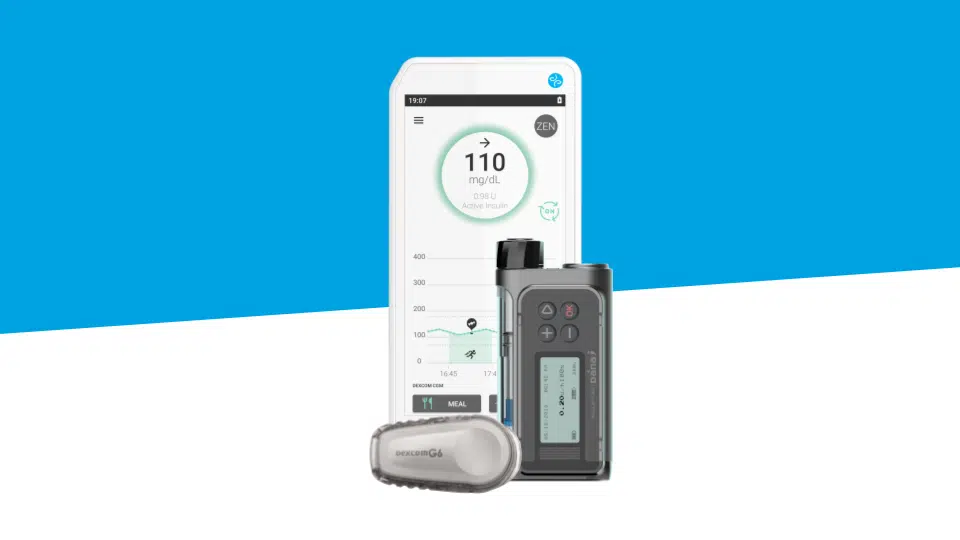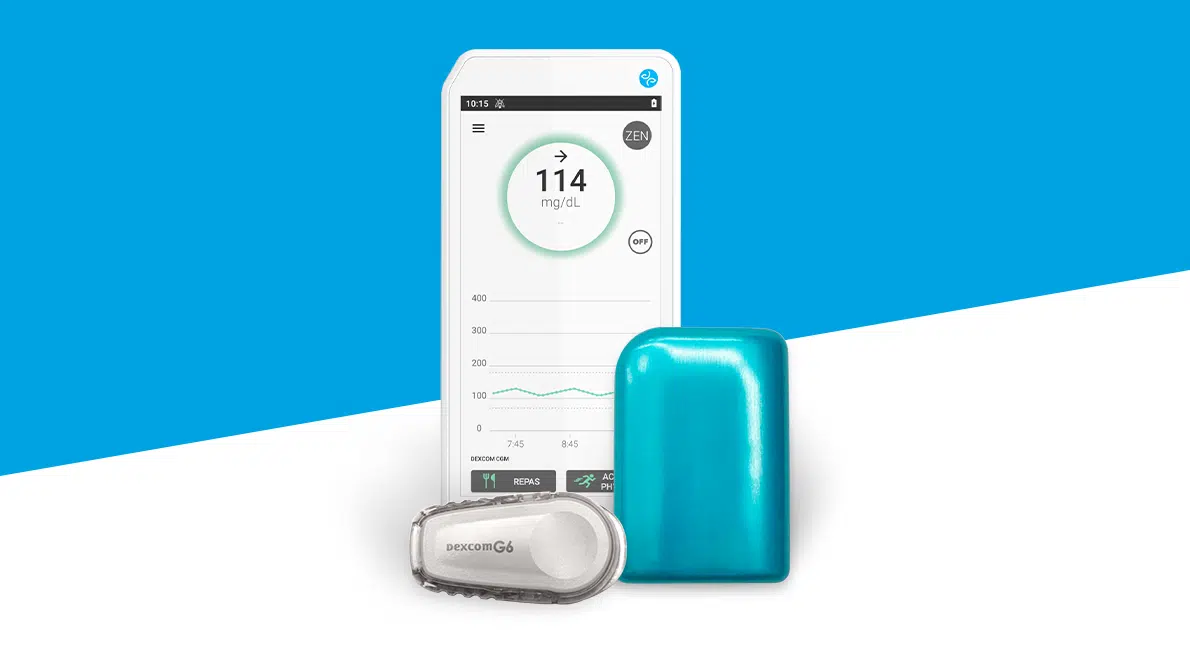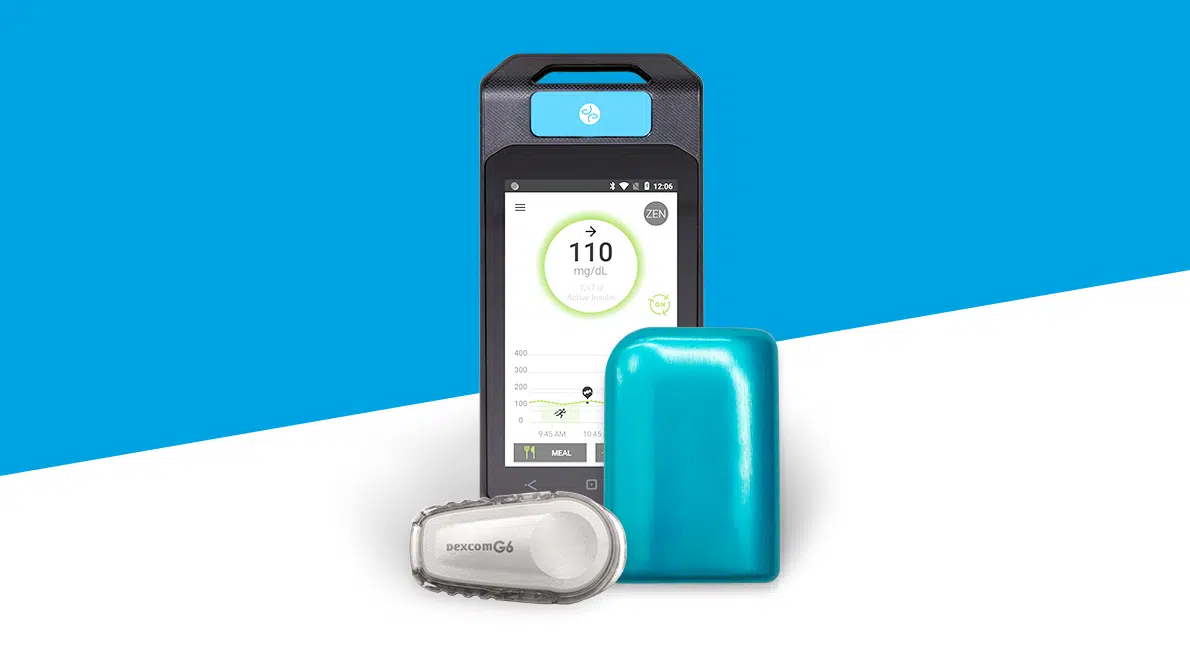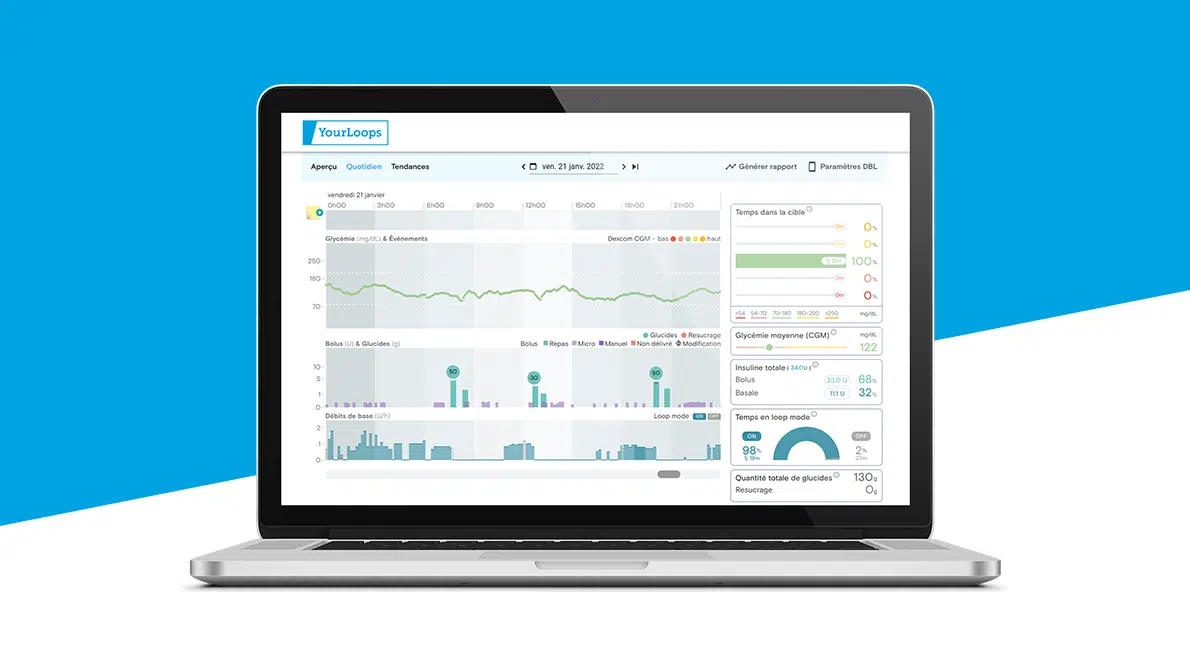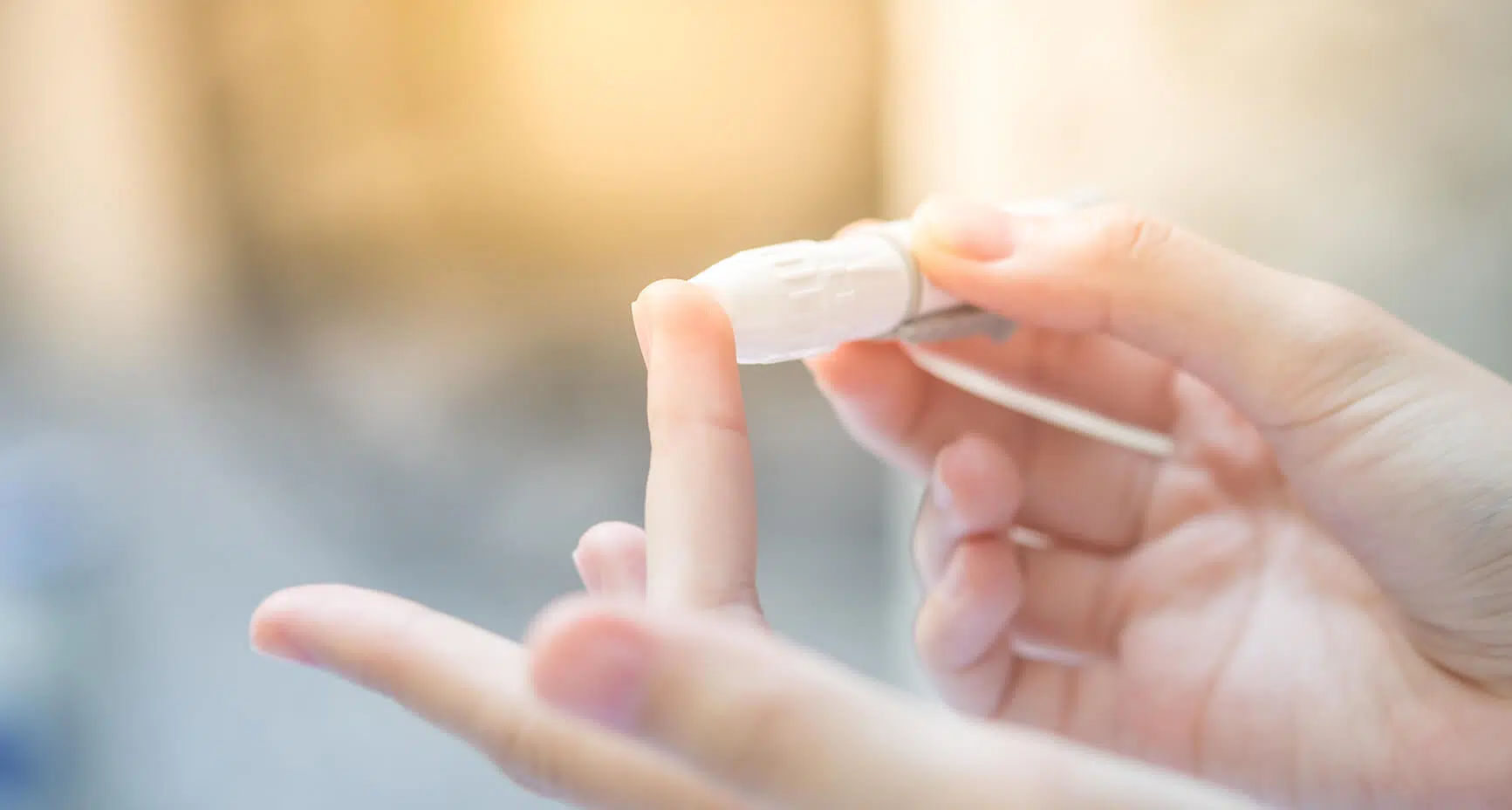
How important are blood sugar levels in Type 1 diabetes?
The aim of every people living with Type 1 diabetes is to control blood glucose levels (glycemia), keeping them as close to normal as possible. This reduces and can even prevent complications.
What is glycemia?
The word “glycemia” comes from the Greek gly, meaning “sweet” or “sugar”, combined with the suffix -emia meaning “blood”. So it literally means sugar in the blood. Glycemia is a vital parameter to life. The required amount of sugar in the blood is maintained thanks to hormones such as insulin and glucagon, and with the help of organs like the pancreas and liver. Hormones maintain blood sugar levels within a normal range, a bit like a thermostat controls the temperature.
Reminder of blood glucose levels¹:
| Hypoglycemia | Below 60 mg/dl |
| Normal blood sugar levels | Fasting: between 70m g/dl and 110 mg/dl |
| 1 hour and 30 minutes after a meal: below 140 mg/dl | |
| Fasting hyperglycemia | Above 110 mg/dl |
Glucose: a poison?
Glucose, the body’s main fuel, is essential to life. It is used by every organ in the body and, most importantly, by the brain. But it can become a “poison” when there is too much of it: long-term hyperglycemia causes complications that can be very serious.
What causes variations in blood sugar levels?
Our blood sugar levels vary throughout the day depending on the situation. Simply moving around can reduce blood sugar levels; intensive sport or exercise can therefore cause hypoglycemia. In times of stress, the body thinks it needs more energy, so blood sugar levels tend to go up. That’s what happens in the event of infection, pain or even periods of intense emotion.
Measuring blood sugar levels
In Type 1 diabetes, the body is unable to produce insulin so it cannot lower blood sugar levels. Therefore regular blood sugar testing is essential so that the amount of insulin to be injected can be adjusted accordingly. People suffering from Type 1 diabetes use blood glucose meters or blood glucose monitoring devices. In conventional meters a drop of blood on a test strip produces a chemical reaction. The meter measures the electricity passing through the strip, which is proportional to the glucose level. Continuous glucose monitoring systems works with a tiny sensor placed under the skin and an electrode to measure glucose levels.
Better control, fewer complications
The body thrives when blood glucose levels are in the target range. If levels drop too low, this causes hypoglycemia. Hypoglycemia is accompanied by a feeling of weakness and, in severe cases, can even cause a hypoglycemic coma. On the contrary, if levels are too high, the result is hyperglycemia: there is too much glucose in the blood and it becomes harmful. This is known as glucotoxicity.
Too much sugar in the blood increases the blood viscosity, or thickness, and disrupts the function of cells in the large vessels, thereby facilitating the build-up of atheromatous plaque. But it is in the small arteries that the earliest complications are seen: diabetic microangiopathies, directly linked to too much sugar in the blood. This glucotoxicity causes damage to the eyes, kidneys, nerves and even the skin.
Blood sugar levels are much more than just a number: patients must manually manage glucose levels and take over the job of their malfunctioning pancreas. So blood glucose monitoring and management are essential in both the short and long term.
https://youtu.be/OYH1deu7-4E
Source: Mechanisms in Medicine (https://www.youtube.com/channel/UCvl8mk9dKfhidf8oVhYkaOg)
¹https://www.diabetes.co.uk/diabetes_care/blood-sugar-level-ranges.html



